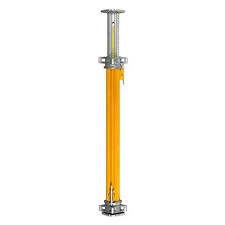Sep . 28, 2024 07:20 Back to list
Formwork Solutions for Constructing Tall Buildings Efficiently and Safely
Formwork for High-Rise Buildings A Key to Efficient Construction
High-rise buildings are an essential part of modern urban development, providing the necessary space for residential, commercial, and mixed-use purposes as cities continue to grow. The construction of these towering structures poses significant challenges, one of the most critical being the formwork system. Formwork is the temporary or permanent molds used to hold concrete in place until it attains sufficient strength to support itself. Proper formwork is vital for ensuring the structural integrity, safety, and efficiency of the construction process in high-rise buildings.
Formwork for High-Rise Buildings A Key to Efficient Construction
Moreover, modern formwork systems are designed to accommodate the unique architectural styles of high-rise buildings. Architects often incorporate complex geometries and innovative designs, pushing the limits of conventional construction techniques. Advanced formwork, including flexible, adjustable, and climbable systems, allows for the realization of these ambitious designs while ensuring that the quality and finish of the concrete are maintained. For instance, systems like jump forms enable the construction team to work on multiple floors simultaneously, providing both safety and efficiency.
formwork for high-rise building

Safety is another paramount consideration in high-rise construction, and the choice of formwork plays a crucial role in this aspect. Properly designed formwork can significantly reduce the risk of accidents on the job site. For example, safety features such as guardrails, integrated scaffolding, and stability enhancements in the formwork design create a safer working environment. Additionally, the use of automated systems and machinery to handle heavy components reduces the physical strain on workers, further enhancing safety.
Environmental sustainability is increasingly becoming a concern in construction practices. Modern formwork systems are designed with sustainability in mind, utilizing materials that are recyclable and minimizing waste during the construction process. For instance, reusable formwork can significantly lower the demand for new materials and reduce the overall carbon footprint of a project. Furthermore, the efficiency gained through advanced systems leads to less energy consumption as construction time is reduced.
The economic implications of efficient formwork systems in high-rise construction cannot be overstated. By reducing labor costs, minimizing material waste, and speeding up the construction process, developers can realize substantial savings. Furthermore, the ability to deliver projects on time can lead to improved cash flow and investment returns.
In conclusion, formwork for high-rise buildings is a critical component of successful construction. With advancements in technology, formwork systems have evolved to enhance efficiency, safety, and sustainability. As cities continue to expand vertically, the importance of sophisticated formwork solutions will only grow, ensuring that high-rise buildings can be constructed swiftly, safely, and sustainably. The future of urban development relies on these innovations to meet the demands of modern society.
-
High-Quality U Head Jack Scaffolding – Reliable Scaffolding Jack Head Manufacturer & Factory
NewsJul.08,2025
-
High-Quality I Beam H20 Leading Timber Beam H20 Material Factory, Exporters & Manufacturers
NewsJul.08,2025
-
High-Quality Powder Coating Steel Formwork - Durable & Corrosion Resistant Solutions
NewsJul.07,2025
-
Inclined Column Formwork Supplier – Durable & Precise Solutions for Unique Structures
NewsJul.07,2025
-
High-Quality Water Stop Solutions Trusted Water Stop Company & Suppliers
NewsJul.07,2025
-
High-Quality Formwork Material Supplier Reliable Manufacturer & Factory Solutions
NewsJul.06,2025